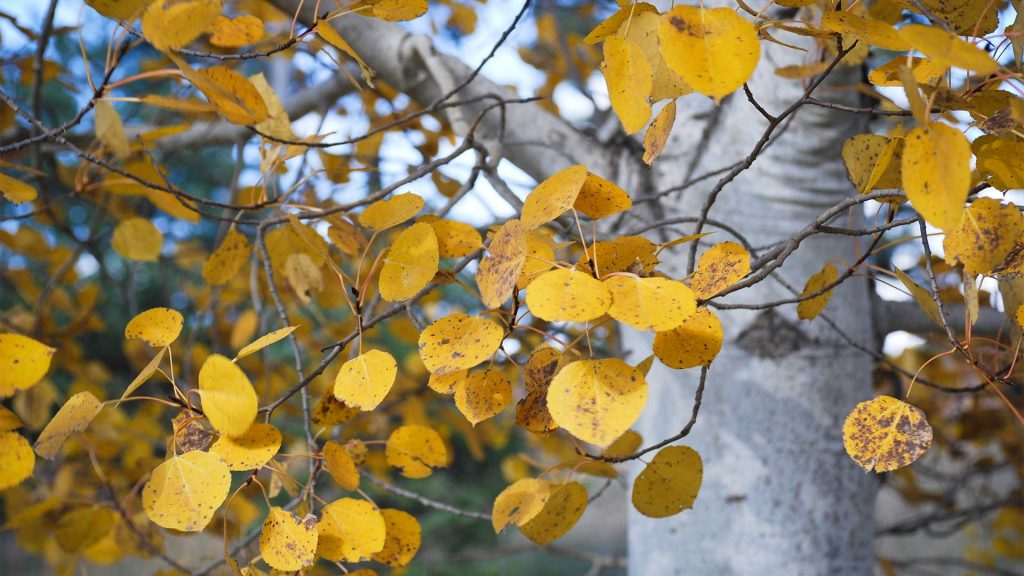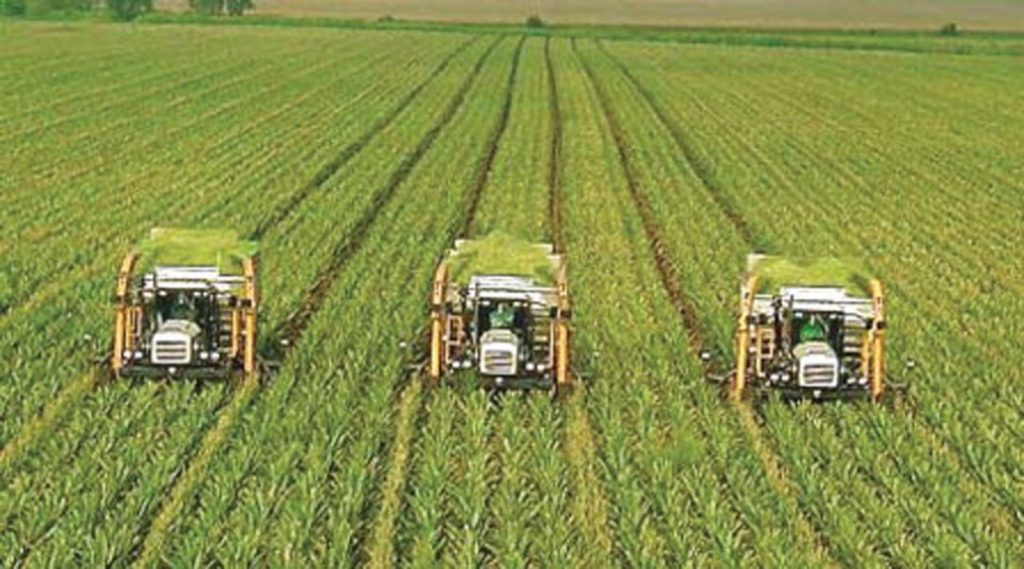Fast-growing trees in the World are known for their relatively rapid growth under favorable conditions.
In this article, we will explore some of the 24 Top fastest growing trees in the world highlighting the following:
- History of these tree plants and where they are native to
- Growth Rate
- Environmental Requirements
- Environmental Importance
- Adaptability to Environment and Soil Requirement
Let’s dive right in!
Fast-growing trees in the world play a crucial role in various applications including nature. They provide oxygen and give us shade, keeping us safe from the scorching sun.
But aside from providing shade and beauty to environmental benefits, trees also protect us from storms and hurricanes by breaking their force before they reach us.
Their growth rates are influenced by factors like climate conditions, soil quality, and tree species-specific traits.
Understanding these factors is essential for selecting the right trees for specific purposes and locations.
Fast-growing trees are not only nature’s way of quickly replenishing greenery but also offer numerous advantages for both humans and the environment.
Read on to find out more about the 24 Top Fast-Growing Trees in The World.
List of Top Fastest Growing Trees in The World
Here’s the list of 24 Fast Growing Trees with their botanical names:
- Thuja Green Giant (Thuja standishii x plicata)
- Black Bamboo (Phyllostachys nigra)
- Baby Giant Arborvitae (Thuja plicata)
- Autumn Blaze Red Maple Tree (Acer × freemanii ‘Autumn Blaze’)
- Rainbow Eucalyptus Tree (Eucalyptus deglupta)
- Weeping Willow (Salix babylonica)
- Lombardy Poplar (Populus nigra ‘Italica’)
- Leyland Cypress (Cupressus × leylandii)
- Dawn Redwood (Metasequoia glyptostroboides)
- Hybrid Poplar (Populus deltoides x Populus nigra)
- River Birch (Betula nigra)
- The Empress Splendor (Paulownia elongata)
- Quaking Aspen (Populus tremuloides)
- Paper Birch (Betula papyrifera)
- Pin Oak (Quercus palustris)
- Tulip Poplar Tree (Liriodendron tulipifera)
- Cleveland Pear Tree (Pyrus calleryana ‘Cleveland Select’)
- Mexican Fan Palm Tree (Washingtonia robusta)
- Heritage River Birch (Betula nigra ‘Heritage’)
- Quaking Aspen (Populus tremuloides)
- October Glory Red Maple (Acer rubrum ‘October Glory’)
- Arborvitae Green Giant (Thuja standishii x plicata ‘Green Giant’)
- Silver Maple (Acer saccharinum)
- Eastern White Pine (Pinus strobus)
Thuja Green Giant (Thuja standishii x plicata)
Thuja Green Giant is a hybrid tree resulting from crossbreeding two Thuja species. characterized by its year-round evergreen foliage and conical to pyramidal shape, it is native to North America.
Thuja Green Giant serves as an excellent windbreak and privacy screen. It’s also used in landscaping to provide shade and beauty.
Growth Rate: This evergreen tree can grow up to 3-5 feet in height per year, reaching a mature height of 60-80 feet with a spread of 12-20 feet. Its leaves are scale-like and green.
Adaptability and Soil Requirements: Hardy and adaptable to a range of climates, making it a popular choice for residential landscapes. It adapts well to various soil types but prefers slightly acidic to neutral soil. Thrives in well-drained soil and prefers full sun to partial shade. Requires regular watering in its early stages.
Black Bamboo (Phyllostachys nigra)
Black Bamboo (Phyllostachys nigra) is native to the Hunan Province of China. It is known for its striking black stems and is widely cultivated elsewhere
Thrives in well-drained, fertile soil and prefers full sun to partial shade. It requires regular watering.
Provides privacy and creates an exotic look in gardens and landscapes. The dense growth can help reduce noise and create shade.
Growth Rate: Can grow up to 2-3 feet per year, reaching a height of 20-30 feet. Its leaves are lance-shaped.
Adaptability and Soil Requirement: Requires well-draining soil and can tolerate slightly acidic to slightly alkaline conditions. It’s adaptable to different climates but prefers a temperate environment.
Baby Giant Arborvitae (Thuja plicata)
This variety of arborvitae (Thuja plicata) is native to North America. Used as a landscaping shrub or hedge for privacy and ornamental purposes. If you like how Thuja Green Giants look but don’t have much room, the Baby Giant Arborvitae is a great tree to pick.
Growth Rate: Grows at a moderate rate and typically reaches a height of 15-20 feet with a width of 4-5 feet. Its leaves are scale-like and green.
Adaptability and Soil Requirement: Well-suited for various climates and soil conditions. Prefers well-draining soil and can tolerate a variety of soil types. Thrives in well-drained soil and prefers full sun to partial shade. Requires consistent watering.
Autumn Blaze Red Maple Tree (Acer × freemanii ‘Autumn Blaze’)
Autumn Blaze is a hybrid red maple (Acer × freemanii) developed in the United States. Provides shade and stunning red fall foliage, and is popular for landscaping.
Growth Rate: It’s known for its rapid growth, adding 3-5 feet in height per year. It can reach a mature height of 40-50 feet.
Adaptability and Soil Requirement: Adaptable to different soil types, but prefers slightly acidic to neutral soil. Well-suited for a range of climates but prefers temperate regions.
Rainbow Eucalyptus Tree (Eucalyptus deglupta)
Native to the Philippines, Indonesia, and Papua New Guinea, this eucalyptus species is known for its vibrant, multicolored bark. Commonly used ornamentally in tropical landscapes.
Growth Rate: Grows relatively quickly, with heights reaching up to 100-200 feet. Leaves are lance-shaped.
Adaptability and Soil Requirement: Prefers loamy or sandy soil. Suited to tropical and subtropical regions with consistent rainfall.
Weeping Willow (Salix babylonica)
The Weeping Willow is native to northern China. It has a long history and cultural significance in Chinese and European traditions.
Provides shade, erosion control, and aesthetics in landscaping and along water bodies.
Growth Rate: This tree is known for its fast growth, with heights averaging 30-40 feet and a similar width annually. Its leaves are narrow and green.
Adaptability and Soil Requirement: Prefers loamy or sandy soil with good drainage. Well-suited to temperate climates and can tolerate occasional flooding.Requires regular watering and pruning to maintain its shape
Lombardy Poplar (Populus nigra ‘Italica’)
The Lombardy Poplar is believed to have originated in Italy but has been widely planted in various regions.
Evolution or windbreaks, privacy screens, and timber production. Fast growth provides quick results in landscaping.
Growth Rate: It’s one of the fastest-growing trees, adding 5-8 feet in height annually. It can reach a mature height of 40-60 feet with a narrow, columnar shape.
Adaptability and Soil Requirement: Suited for temperate climates but not ideal for extremely hot or dry regions. Adaptable to various soil types, but prefers moist, fertile soil.Requires consistent watering in drier conditions.
Leyland Cypress (Cupressus × leylandii)
The Leyland Cypress is a hybrid species created in the United Kingdom in the 19th century.
Commonly used for privacy screens and windbreaks. Its rapid growth makes it a popular choice in landscaping.
Growth Rate: Grows rapidly, adding 3-4 feet in height annually. It can reach a mature height of 60-70 feet with a dense, conical shape.
Adaptability and Soil Requirement: Tolerates various soil types but prefers moist, well-draining soil. Well-suited for temperate climates and can withstand occasional drought. Requires regular watering when young.
Dawn Redwood (Metasequoia glyptostroboides)
The Dawn Redwood is native to China and was thought to be extinct until rediscovered in the mid-20th century. Known for its unique appearance and contribution to biodiversity as a living fossil
Growth Rate: Grows moderately, with an average height increase of 1-2 feet per year. It can reach a mature height of 70-100 feet.
Adaptability and Soil Requirement: Adaptable to different soil types but prefers moist, loamy soil. Suited to temperate climates with consistent moisture.
Hybrid Poplar (Populus deltoides x Populus nigra)
Hybrid Poplars are a result of crossing Eastern Cottonwood (Populus deltoides) and European Black Poplar (Populus nigra). Widely planted for timber production, windbreaks, and erosion control. Rapid growth makes it valuable for various purposes.
Growth Rate: Extremely fast-growing, adding 5-8 feet in height annually. Can reach a mature height of 40-60 feet.
Adaptability and Soil Requirement: Tolerant of different soil types, but prefers moist, nutrient-rich soil. Well-suited for temperate climates and adaptable to various environments.Requires regular watering in its early years.
River Birch (Betula nigra)
River Birch is native to eastern North America. It has been valued for its ornamental qualities and use in landscaping. Used for erosion control along riverbanks and provides habitat and food for wildlife.
Growth Rate: Grows rapidly, with an annual height increase of 2-3 feet. Typically reaches a height of 40-70 feet with a moderate width. Its leaves are oval and green.
Adaptability and Soil Requirement: Thrives in loamy or sandy soil with good drainage. Suited for temperate climates and can tolerate occasional flooding. Prefers moist to wet soil and full sun to partial shade. Regular watering is essential, especially in dry periods.
The Empress Splendor (Paulownia elongata)
The Empress Splendor, also known as the Royal Paulownia, originates from China. It was historically cultivated for its valuable timber. Known for its high-quality wood and fast growth, it’s planted for timber production and as an ornamental tree.
Growth Rate: Exceptionally fast-growing, with heights increasing up to 15 feet per year. Can reach a mature height of 40-60 feet with large, heart-shaped leaves.
Adaptability and Soil Requirement: Adaptable to various soil types but prefers well-drained soil. Suited for temperate climates with mild winters. Requires adequate watering during the growing season.
Quaking Aspen (Populus tremuloides)
Quaking Aspen is native to North America and is known for its widespread growth in cold and temperate regions. Forms large groves and provides a habitat for various wildlife. It’s a symbol of autumn with its distinctive leaves.
Growth Rate: Grows rapidly, adding 2-3 feet in height annually. Typically reaches a height of 40-50 feet with small, round leaves.
Adaptability and Soil Requirement: Adaptable to different soil types, including rocky or sandy soils. Well-suited for cold climates and can thrive in a range of environments.Requires adequate moisture but can tolerate drier conditions once established.
Paper Birch (Betula papyrifera)
Paper Birch, also known as White Birch, is native to North America. Indigenous people used its bark for making paper and canoes. Supports wildlife and provides visual interest in landscapes due to its bark and foliage.
Growth Rate: Grows moderately fast, with an annual height increase of 1-2 feet. Typically reaches a height of 40-70 feet with distinctive white bark.
Adaptability and Soil Requirement: Adaptable to various soil types but thrives in moist, fertile soil. Well-suited for temperate climates and can tolerate cold winters.
Pin Oak (Quercus palustris)
Pin Oak is native to eastern North America. It’s valued for its vibrant fall foliage and adaptability to urban environments. Used in urban landscaping and provides habitat for birds and insects.
Growth Rate: Grows moderately fast, adding 1-2 feet in height annually. Typically reaches a height of 60-70 feet with deeply lobed leaves.
Adaptability and Soil Requirement: Prefers acidic, loamy soil with good drainage. Suited for temperate climates and urban settings, tolerant of wetter conditions.
Tulip Poplar Tree (Liriodendron tulipifera)
Native to eastern North America, the Tulip Poplar, also known as the Yellow Poplar or Tulip Tree, has been prized for its timber and distinct tulip-like flowers. Provides habitat for various wildlife, including birds and insects. Its timber is valuable for construction.
Growth Rate: Grows at a moderate to fast rate, adding 2-3 feet in height annually. Can reach an impressive height of 70-90 feet with large, tulip-shaped leaves.
Adaptability and Soil Requirement: Adaptable to various soil types but thrives in moist, rich soils. Well-suited for temperate climates and can tolerate diverse environmental conditions.
Cleveland Pear Tree (Pyrus calleryana ‘Cleveland Select’)
The Cleveland Pear is a cultivar of the Callery Pear, originally native to China. It was introduced as an ornamental tree. Often used in landscaping for its vibrant spring blooms and attractive foliage. It provides a habitat for pollinators.
Growth Rate: Grows at a fast rate, adding 3-4 feet in height annually. Typically reaches a height of 30-40 feet with glossy, dark green leaves.
Adaptability and Soil Requirement: Adaptable to various soil types but prefers well-drained soil. Suited for temperate climates and can withstand urban environments.
Mexican Fan Palm Tree (Washingtonia robusta)
Native to Mexico and northern South America, the Mexican Fan Palm is known for its distinctive fan-shaped fronds and tall trunk. Used for ornamental landscaping in warm climates and provides nesting sites for birds.
Growth Rate: Grows at a moderate rate, adding 1-2 feet in height annually. Can reach a towering height of 80-100 feet with large fan-shaped leaves.
Adaptability and Soil Requirement: Adaptable to various soil types but prefers well-drained soil. Well-suited for hot, arid climates and coastal areas.
Heritage River Birch (Betula nigra ‘Heritage’)
The Heritage River Birch is a cultivar of the native River Birch, which is found in eastern North America. It’s known for its attractive peeling bark.
Growth Rate: Grows at a moderate to fast rate, adding 2-3 feet in height annually. Typically reaches a height of 40-70 feet with small, diamond-shaped leaves. Used for landscaping and provides habitat for wildlife. Its distinctive bark adds visual interest.
Adaptability and Soil Requirement: Thrives in moist, acidic soil with good drainage. Well-suited for temperate climates and thrives near water bodies. Regular watering is essential, especially in hot weather.
Quaking Aspen (Populus tremuloides)
Quaking Aspen is native to North America and is known for its distinctive trembling leaves. It forms extensive groves in cold and temperate regions. The green leaves become golden to yellow in autumn. Forms large groves and provides a habitat for various wildlife. It’s a symbol of autumn with its distinctive leaves.
Growth Rate: Grows rapidly, with heights increasing up to 15 feet per year. Can reach a mature height of 40-60 feet with small, round leaves.
Adaptability and Soil Requirement: Adaptable to different soil types, including rocky or sandy soils. Well-suited for cold climates and can thrive in a range of environments.
October Glory Red Maple (Acer rubrum ‘October Glory’)
The October Glory Red Maple is a cultivar of the native Red Maple and is indigenous to eastern North America. It’s renowned for its brilliant fall foliage. Valued for its stunning fall color and shade-providing canopy. Attracts birds and pollinators.
Growth Rate: Grows at a moderate rate, adding around 1-2 feet in height annually. Typically reaches a height of 40-50 feet with vibrant red leaves in the autumn.
Adaptability and Soil Requirement: Adaptable to various soil types, but it prefers slightly acidic, moist soil. Suited for temperate climates and various environments. Although regular watering is essential, especially during dry spells.
Arborvitae Green Giant (Thuja standishii x plicata ‘Green Giant’)
The Green Giant Arborvitae is not native to North America but is a hybrid of Japanese and Western Redcedar Arborvitae species. Frequently used for privacy screens and windbreaks in landscaping. Provides year-round greenery.
Growth Rate: Grows rapidly, adding 3-4 feet in height annually. Can reach a mature height of 40-60 feet with dense, evergreen foliage.
Adaptability and Soil Requirement: Adaptable to various soil types, including clay or sandy soils. Suited for temperate climates and can tolerate urban environments.
Silver Maple (Acer saccharinum)
The Silver Maple is native to eastern and central North America. The silver maple tree is a relatively fast-growing deciduous tree, known for its silvery undersides of leaves and rapid growth. Provides shade and habitat for wildlife, and Its timber is used for various purposes.
Growth Rate: Grows rapidly, adding 2-3 feet in height annually. Can attain a height of 50-80 feet with large, five-lobed leaves.
Adaptability and Soil Requirement: Adaptable to various soil types, including wet soils near water bodies. Well-suited for temperate climates, especially in areas with ample moisture.
Eastern White Pine (Pinus strobus)
Native to eastern North America, the Eastern White Pine is one of the tallest pine species. It has been historically important for timber and shade. Provides habitat for birds and small mammals.
Growth Rate: Grows moderately, adding 1-2 feet in height annually. Can achieve a towering height of 50-80 feet with long, soft needles.
Adaptability and Soil Requirement: Prefers well-drained, acidic soil. Suited for temperate climates and can be found in diverse environments, from mountains to lowlands.
Conclusion
Specific growth rates, environmental requirements, and adaptability may vary among species and even within species.
Local climate and soil conditions also influence the performance of these fast-growing tree species. When planting any of these trees, it’s essential to consider your local conditions and seek guidance from local horticultural experts for optimal growth and care practices.


